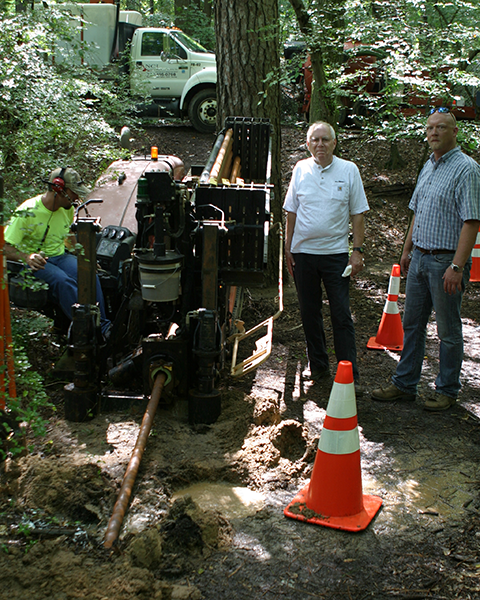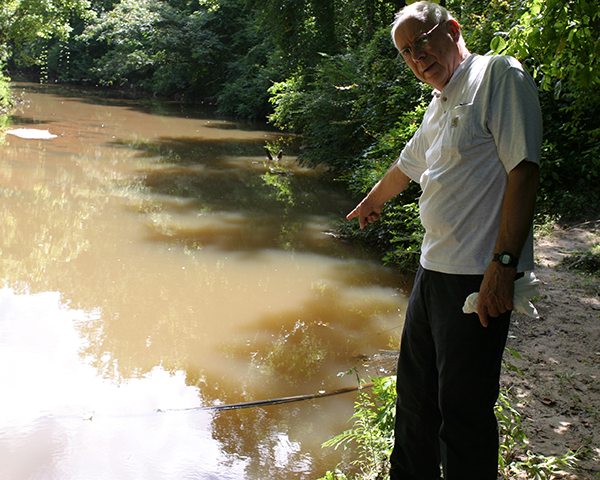
In our modern era of computing, network connectivity while sitting in the blissful air conditioning of a Georgia summer is quite simple. If my network is down, I call someone. I never spend time thinking about the actual infrastructure that makes it work.
All that changed this week, however, as I accompanied Roland Farrar (Enterprise Services) to take photos of a bore construction project through Lullwater Park.
The project was needed to replace a network cable, buried many years ago to connect the VA Hospital to the Emory Network. That cable, the single connection between two locations separated by the heavily-wooded Lullwater Park, became unearthed in a creek bed when its banks widened due to extreme wet weather. As a result, this cable has been floating on the water’s surface, occasionally catching logs or large debris that at any time could sever the connection.
To complicate things further, a separate section of this same cable was accidentally cut during a parking deck construction project a few years ago. The VA paid for the repairs but left the cable strung around the construction site on top of the ground, vulnerable to vandals, lawnmowers, etc.
David Topper (Infrastructure) pointed out that a new cable was needed to accommodate a wireless expansion and increased numbers of users at the VA. After some wrangling regarding ownership of the repairs, Paul Petersen‘s (Infrastructure) team took on the project to replace and re-bury the cable.
As a result, the project required over 1,200 feet of cable and 500 feet of underground boring to run the new cable much deeper beneath the creek bed.

So there I was, tromping through the woods of Lullwater, sweating profusely, and trying to avoid the mosquitoes, spiders, and snakes, so that I could take photos of the effort.
Using Ditch Witch directional bore equipment, the bore team from Network Cabling Infrastructure (NCI) corkscrewed steel pipe, in 10-foot sections, into the ground. This pipe would later allow the cable, protected by a PVC sleeve, to be fed under the creek.
Locators track the exact location of the nose of the train of pipes using a sonar system embedded in the drill tip. Workers are able to maneuver the pipes through or around underground obstacles, then force the drill head to turn back towards the surface of the forest floor once it has passed safely beneath the creek.
Watching the operation, I was impressed by the minute ecological footprint left by the high-tech construction equipment. Once the Ditch Witch is pulled back out of the woods, the only remnants of this job will be a few narrow tread marks and a small hole, about as big as a softball. A permanent concrete/fiberglass manhole will also be installed to allow easier access to the cable.
These projects remind us that we can maintain a state-of-the-art fiber network while being excellent stewards of our beautiful campus and its natural landscapes, even in the heart of the big city. And they remind me how much I like an air-conditioned office!

Leave a Reply